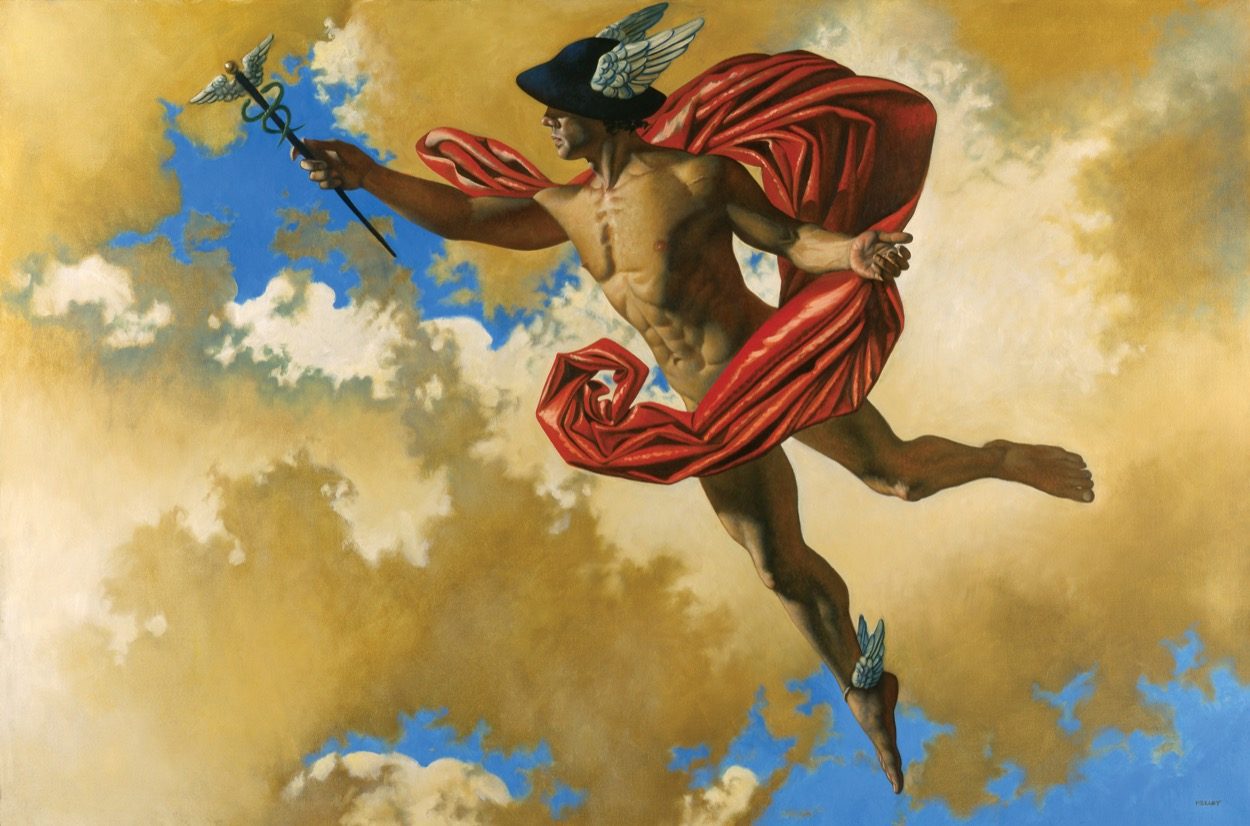Chúng ta vẫn tiếp tục tạo ra những huyền thoại mới để giải thích thế giới của riêng mình, mục đích sống, lý do cho những sự yếu đuối của mình. Huyền thoại về một doanh nhân thành đạt trong giới kinh doanh, huyền thoại về một vị thánh trong các nhóm tôn giáo, huyền thoại về một học giả nơi những kẻ đang tìm kiếm kiến thức. Các huyền thoại sẽ liên tục được tạo ra nhằm tạo nên ý nghĩa của mọi điều chúng ta hành động. Quá trình đồng nhất phóng chiếu (Introjective identification) sẽ kéo dài liên lỉ trong toàn bộ hành trình sống. Các suy tư về điện ảnh hiện đại chỉ ra rằng, người xem sẽ đồng nhất mình với một vài tuyến nhân vật phù hợp với “ideal ego” của mình, ngược lại, ý thức hệ sẽ được truyền tải qua nội dung cũng như các cảnh trong phim, cảnh phim là cảnh sống.
Không thể sống nếu thiếu các huyền thoại, thế giới con người được duy trì mục đích nhờ những con đường, những luồng ánh sáng được tạo nên từ trước. Có lẽ rằng, tất cả chúng ta đều là những cá thể cừu bé nhỏ ở trong một đàn cừu do một ý thức hệ (ideology) dẫn dắt. Những “ý thức hệ” là những ý niệm được tạo ra từ rất lâu đời với một nguồn sức mạnh to lớn được cả cộng đồng rộng lớn chấp nhận, dần dần nó chi phối nhận thức, niềm tin, đường hướng, sự phát triển của một người. Sự thống trị của tiền bạc trong chủ nghĩa tư bản khiến cho tất cả mọi người đều quay cuồng trong vòng xoáy tiền bạc, tranh đấu, chém giết nhau để dành lấy những món lợi. Những niềm tin trong một tôn giáo nào đó khiến cho họ có thể chết vì đạo của mình. Những người theo tôn giáo thường kế tục những niềm tin của các thế hệ tổ tiên họ và rất hiếm người thắc mắc về niềm tin của chính mình. Những “ý thức hệ” được truyền lại nhờ các dạng thức ngôn ngữ dù ý thức hay vô thức, ngôn ngữ là thứ bao trùm tất cả, lấy đi tất cả những gì thuộc bản thể người.
“Even before formal schools of philosophy got started, people were inventing myths to help explain reality. These myths usually portrayed natural forces as people or gods. By thinking about natural forces in human terms, people made sense of the strange and mysterious things going on around them: rain, thunder, sunshine, the seasons, birth, growth, death.However, these myths did not attempt to explain what reality is physically made of; they were more concerned with explaining how reality affects human activities and relationships. Myths personified nature—it was one big, not-so-happy family. Earth is our mother, the sun or sky is Dad, the sea is a weird uncle, and the hill to the north is a distant cousin. Storms may be fights; a nice day may mean that the sky-daddy has found anew girlfriend; winter comes when Earth-mama finds out about it and gives everyone the cold treatment. The first philosophers differed from the mythmakers by explaining reality in more general, less familiar terms. The ancient Greek philosopher Thales, sometimes consideredthe first philosopher, said that all things were made out of water—everything that exists is really water in a more or less complicated form. Other early philosophers believed that everything was made of four “elements”: earth, air, fire, and water. Still others thought the world was made of a single substance that could be broken down into tiny, indivisible particles called atoms. These early theories about reality are not “scientific” as the word is used today—that is, they do not result from experimental tests or controlled observation. But they are impersonal and suggest rules for the makeup of reality and how it is organized. These early philosophers wanted to know not only what reality is, but also how it is shaped and how it works. They came up with theories, rather than stories, to answer their questions.”
– Jay Stevenson, The complete idiot’s guide to philosophy –
